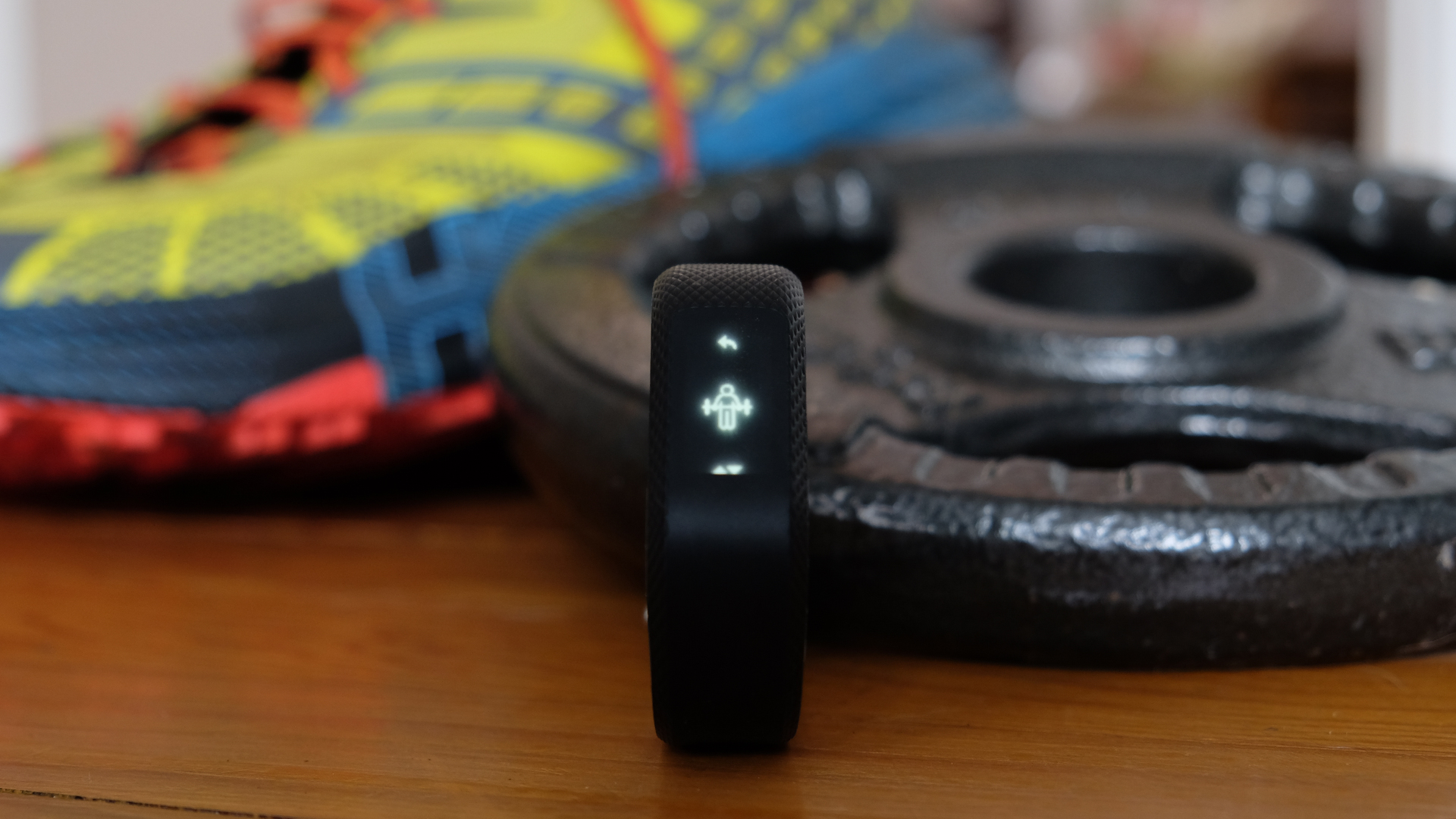Why you can trust TechRadar
Compatibility
- Works with iOS, Android and Windows
- Gain deeper insight using a browser
The Garmin Vivosmart 3 plays nice with everything. Essentially, if you have a Bluetooth smartphone, be it Apple, Android or Windows 10 Mobile, then you can enjoy the full power of the Garmin Connect app and all its connectivity treats.
Since the Connect platform is cloud-based you can also check your data via a browser with more detailed charts - ideal for analyzing your health progress.
Some argue there is too much depth in the Connect platform as it tries to cover all sports, but others appreciate the options granted by that. It will really come down to how you train and how much effort you are willing to put into personalizing Connect.

Battery life
- 5 to 6 days life
- Sub-hour full charge time
Garmin reckons you will get five days of use out of the Vivosmart 3. In reality you can manage to eke out about six days, depending on how much exercise and notification reading you do. We exercised near daily and had smart notifications on all day with plenty of screen checks yet still got five days easily.
What’s more, the charging time is rapid, getting to full in well under an hour - so battery life really is never a concern. Even if it gets below 10% and you’re mid-workout, the screen will simply lock on a low battery alert while tracking continues until you’re done. Smart.
Verdict
The inclusion of that VO2 max measure in the Vivosmart 3 allows for accurate training metrics which can help you work towards a fitter future.
Rep counting for weights, fitness age and heart rate monitoring complement a very capable activity tracker that only lacks GPS. But that makes this an affordable option to help you get fitter.
Sign up for breaking news, reviews, opinion, top tech deals, and more.

Who's this for?
The lack of GPS makes the Vivosmart 3 less appealing to runners and cyclists. But the VO2 max and rep counting measures make this ideal for gym-goers and class-takers alike.
Then the stress score, smart notifications, sleep and activity tracking all make this perfect for anyone who simply wants to take the first steps into a fitter lifestyle.
For those looking for a tracker that also offers smartwatch functions, the Vivosmart 3 has you covered. It’s also tough and affordable, unlike lots of smartwatch options out there.
Should you buy it?
If you don’t yet have an activity tracker or smartwatch but want to see if your efforts to reach a healthier self are working, this is for you.
However, if you’re a runner, cyclist, swimmer or any outdoor activity fan that could benefit from GPS there are better options out there, like the Garmin Forerunner 935 or the new Forerunner 645.
If you only want step counting then there are far cheaper fitness trackers out there too. But if you want that rare gym-based rep counting then this is an ideal option.
First reviewed: July 2017
Competition
Not sure on the Vivosmart 3? Here are three devices we think may also suit you as your next fitness tracker.
Fitbit Alta HR

The Fitbit Alta HR and the Vivosmart 3 are both looking to fill that sweet spot between the basic trackers and more expensive smart fitness watches. As the name suggests, the super-slim Alta HR has a focus on heart-rate tracking (which is excellent), but also promises sleep stage tracking, automatic exercise recognition and seven day battery life.
There’s basic smartphone notifications and occasional reminders to move. The Garmin device probably has the edge for gym rats, thanks to rep counting when strength training, while also boasting the advantage of the VO2 Max readings.
- Read our Fitbit Alta HR review
Garmin Vivosport

Whether it’s Vivofit, Vivosmart or Vivoactive Garmin’s trackers offer consistently solid fitness tracking. At £160/$160/AU$300, it’s a little more expensive than the Vivosmart 3, so here’s where the extra money goes: It adds a vibrant, always-on all-touch display (with improved visibility in sunlight) with reliable GPS and an impressive 8-hours of battery life in GPS mode (seven days in normal mode).
Features like VO2 Max and stress readings are carried over from the Vivosmart, which, if all you require is a step tracker with continuous heart rate monitoring, might be the better option.
- Read our Garmin Vivosport review
Fitbit Charge 2

Another Fitbit device rounds out our Garmin Vivosmart 3 competitors. All things considered, the Charge 2 is perhaps the most obvious rival. Both offer similar fitness tracking capabilities, while the heart rate tracking is consistent if a little less reliable than both companies’ premium devices.
The Garmin device has the advantage of waterproofing and swim tracking, while the automatic rep tracking also beats the Charge 2. Fitbit fights back with its superior sleep tracking smarts and, arguably, a more stylish band.
- Read our Fitbit Charge 2 review
Current page: Compatibility, battery life and verdict
Prev Page Specs, performance and fitnessLuke is a freelance writer and editor with over two decades of experience covering tech, science and health. Among many others he writes across Future titles covering health tech, software and apps, VPNs, TV, audio, smart home, antivirus, broadband, smartphones, cars and plenty more. He also likes to climb mountains, swim outside and contort his body into silly positions while breathing as calmly as possible.

